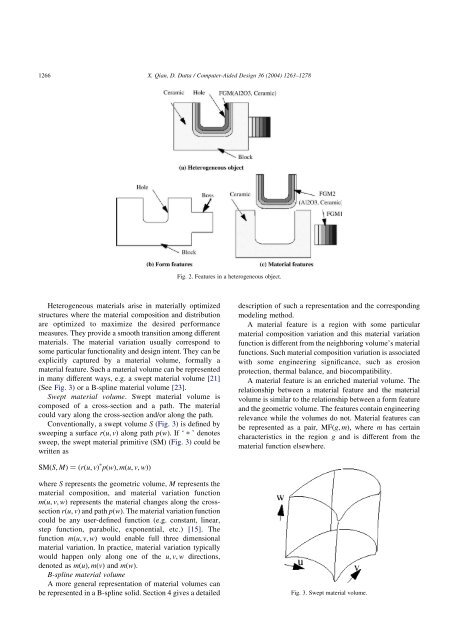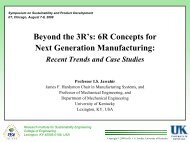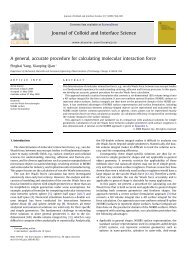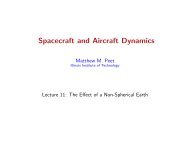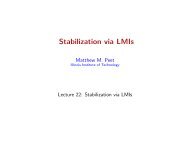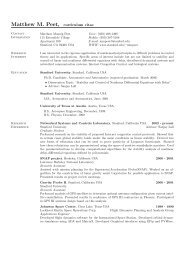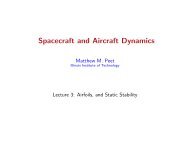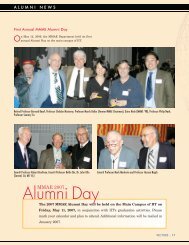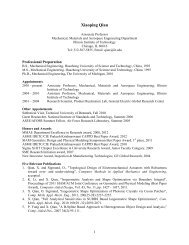Feature-based design for heterogeneous objects - Mechanical ...
Feature-based design for heterogeneous objects - Mechanical ...
Feature-based design for heterogeneous objects - Mechanical ...
You also want an ePaper? Increase the reach of your titles
YUMPU automatically turns print PDFs into web optimized ePapers that Google loves.
1266X. Qian, D. Dutta / Computer-Aided Design 36 (2004) 1263–1278Fig. 2. <strong>Feature</strong>s in a <strong>heterogeneous</strong> object.Heterogeneous materials arise in materially optimizedstructures where the material composition and distributionare optimized to maximize the desired per<strong>for</strong>mancemeasures. They provide a smooth transition among differentmaterials. The material variation usually correspond tosome particular functionality and <strong>design</strong> intent. They can beexplicitly captured by a material volume, <strong>for</strong>mally amaterial feature. Such a material volume can be representedin many different ways, e.g. a swept material volume [21](See Fig. 3) or a B-spline material volume [23].Swept material volume. Swept material volume iscomposed of a cross-section and a path. The materialcould vary along the cross-section and/or along the path.Conventionally, a swept volume S (Fig. 3) is defined bysweeping a surface rðu; vÞ along path pðwÞ: If ‘ p ’ denotessweep, the swept material primitive (SM) (Fig. 3) could bewritten asdescription of such a representation and the correspondingmodeling method.A material feature is a region with some particularmaterial composition variation and this material variationfunction is different from the neighboring volume’s materialfunctions. Such material composition variation is associatedwith some engineering significance, such as erosionprotection, thermal balance, and biocompatibility.A material feature is an enriched material volume. Therelationship between a material feature and the materialvolume is similar to the relationship between a <strong>for</strong>m featureand the geometric volume. The features contain engineeringrelevance while the volumes do not. Material features canbe represented as a pair, MFðg; mÞ; where m has certaincharacteristics in the region g and is different from thematerial function elsewhere.SMðS; MÞ ¼ðrðu; vÞ p pðwÞ; mðu; v; wÞÞwhere S represents the geometric volume, M represents thematerial composition, and material variation functionmðu; v; wÞ represents the material changes along the crosssectionrðu; vÞ and path pðwÞ: The material variation functioncould be any user-defined function (e.g. constant, linear,step function, parabolic, exponential, etc.) [15]. Thefunction mðu; v; wÞ would enable full three dimensionalmaterial variation. In practice, material variation typicallywould happen only along one of the u; v; w directions,denoted as mðuÞ; mðvÞ and mðwÞ:B-spline material volumeA more general representation of material volumes canbe represented in a B-spline solid. Section 4 gives a detailedFig. 3. Swept material volume.


